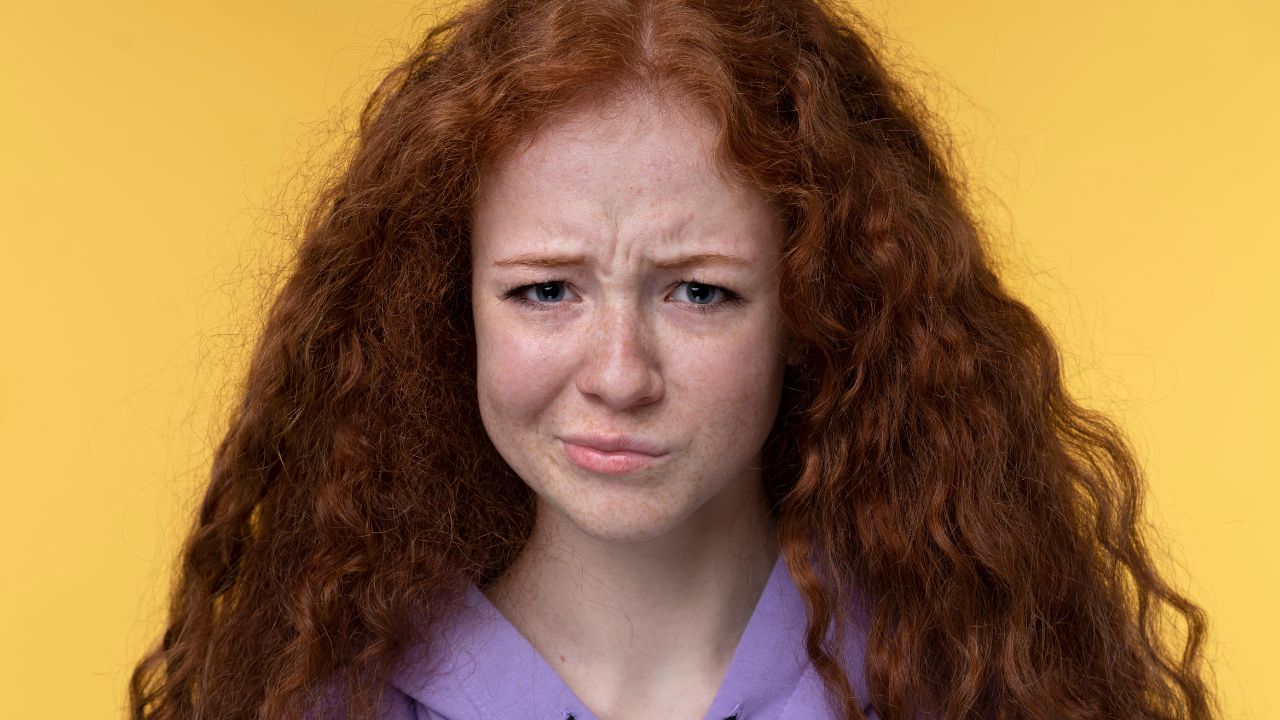What Is Poofy Hair and How To Style It?
When we’re thinking of poofy hair, the image of strands with undesired volume and a frizzy, unruly appearance springs to mind. If that’s what you see in the mirror and you hate it, we have good news for you – poofy hair is not one of the hair types you are born...
- 4 min read

When we’re thinking of poofy hair, the image of strands with undesired volume and a frizzy, unruly appearance springs to mind. If that’s what you see in the mirror and you hate it, we have good news for you – poofy hair is not one of the hair types you are born with. So, with a few tips and TLC approach, you’ll be able to change the way your hair looks and behaves.
Why Is My Hair Poofy?
First of all, if you describe your hair as “poofy”, chances are high that you have naturally wavy or curly hair but treat it as straight. Here is an easy curly hair test that will help you know for sure and change your routine accordingly.
Second, thick hair tends to look poofy if not thinned out properly. In this case, asking your stylist to take some weight out of your hair will be helpful. Also, remember that you need to smooth the bulk to avoid a poofy look. Rubbing a towel against the head or blow drying hair chaotically will be counterproductive. Instead, get the hang of a blow drier and direct the air flow down your hair, pressing it with a brush a little. Yes, poofy hair solution can be as easy as that!
Now, let’s go through other factors that contribute to poofiness. You might find the answer to your question by looking critically at the health of your hair and your hair routine.
1. Hair Porosity. Naturally curly hair and hair that’s been processed or fried by frequent use of heat, is drier and more porous, meaning that the outer layer of the cuticle is lifted. If your hair is porous, you need to address it by using deep-conditioning masks and specialized treatments, as well as lock in the moisture with gel or oils. Skipping this step will leave your hair unprotected and absorbing water from the environment like crazy – hello messy puffy look.
2. Harmful Styling Practices. Brushing curly or wavy hair when dry is a direct indication to a frizzy poofy look with no curl clumps in sight. Same goes with blow drying curly hair (instead of diffusing it), blow drying straight hair upside down (that is against the hair cuticle), or vigorously rubbing your wet hair with a towel. Needless to say, anything that contributes to hair damage and increased porosity, contributes to poofiness too.
3. Not Humidity-Proofing Your Hair. Even healthy and nourished hair will absorb moisture from air when it’s super humid. Stock up on anti-humidity products, hair sprays and gels to shield your hair from the weather conditions. Embracing protective hairstyles such as braids, buns, or flat twists can help you deal with poofiness on hot humid days too.
What Is the Difference Between Poofy and Frizzy Hair?
Frizzy hair tends to look damaged, unruly, and lacking a definite texture. On the flip side, poofy hair may look healthy but stick away from your head and feature untamed volume, which may look a bit overwhelming. It may happen though that your hair is both frizzy and puffy.
How to Style Poofy Hair?
When styling poofy hair, the goal is to minimize volume and smooth out the hair. Flat wrap blow dry technique, explained in the tutorial below, is most helpful here. This technique works great on both long and shorter hair lengths.
Here are a few poofy hair styling takeaways to remember:
- Define the section you’re going to work on first; if needed, use professional hair clips to keep other sections away.
- Blow dry the hair down the hair growth, applying tension with a brush.
- Use anti-static brush and ionic blow dryer that help flatten the hair cuticles.
We truly believe that the tips above will help you get to terms with your hair and smooth out any unwanted poofiness. And on those lazy days, why not just embrace the mess and enjoy that fluffy texture others might be craving!
Featured image via Freepik
- Tags:
- Hairstyles